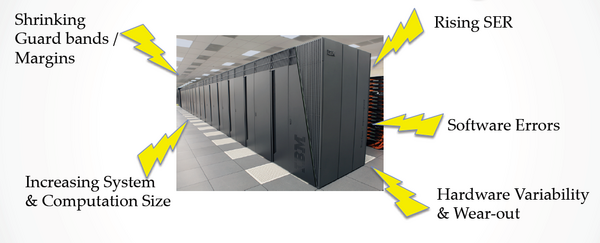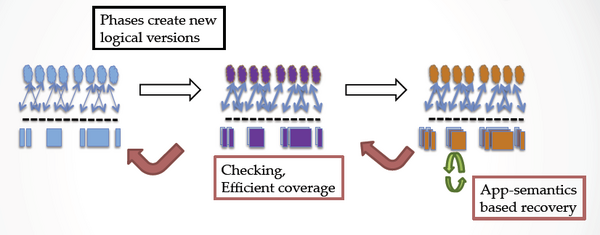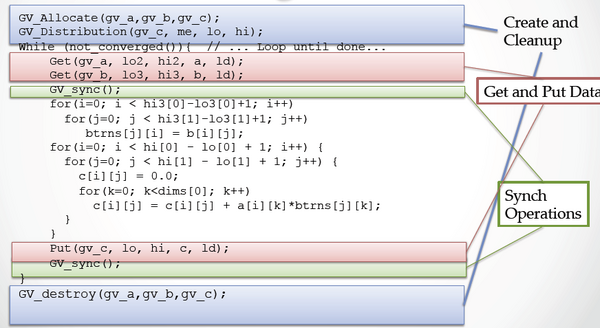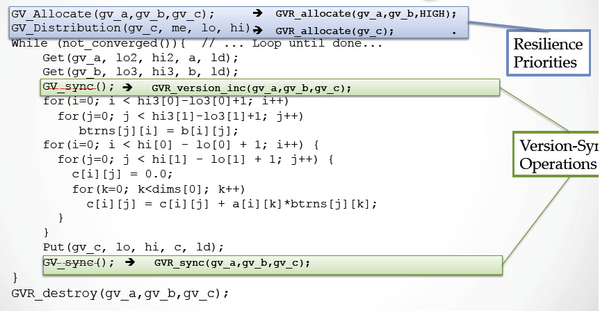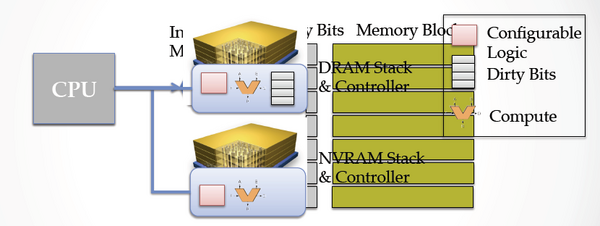GVR
From Modelado Foundation
| GVR | |
|---|---|
 | |
| Team Members | U. of Chicago, ANL, HP Labs |
| PI | Andrew A. Chien (U. of Chicago) |
| Co-PIs | Pavan Balaji (ANL) |
| Website | team website |
| Download | {{{download}}} |
Description about your project goes here.....
Team Members
Resilience Challenges
- Can we achieve a smooth transition to system resilience? (a la Flash memory, Internet)
- What’s an application to do?
Resilience Co-design
Co‑design without co‑dependence
- Software: Information and Algorithms to enhance resilience (REQ: Portable, flexible)
- Runtime, OS, and Architecture Mechanisms to enhance resilience (REQ: leverage beyond HPC, cheap)
Challenges
- Enable an application to incorporate resilience incrementally, expressing resilience proportionally to the application need
- “Outside in”, as needed, incremental, ...
GVR Approach
- Application-System Partnership
- Expose and exploit algorithm and application domain knowledge
- Enable “End to end” resilience model
- Foundation in Data-oriented resilience
- Internet services, map-reduce, internet, ...
- Achieve with high performance and massive parallelism...
- Global view data Foundation (PGAS..., GA, SWARM, ParalleX, CnC, ...)
Data-oriented Resilience
- Parallel applications and global-view data
- Natural parallel structure version-to-version
- Example: shock hydro simulation at t=10ms to 100ms
- Example: iterative solver at iteration 1 to 20
- Example: monte carlo at 10M to 20M points
- Temporal redundancy enables rollback and resume
- User-controlled, convenient
Resilience Partnership
- Proportional Resilience
- Application specifies “Resilience priorities”
- Mapped into data-redundancy in space
- Mapped into redundancy in time (multi-version)
- Complements computation/task redundancy efforts
- Deep error detection: invariants, assertions, checks ... and recovery
- Applications add further checks based on algorithm and domain semantics
- Application add flexible, adaptive recovery mechanisms (and exploit multi-version)
- “End-to-end” resilience
GVR Approach
- x-layer approach for efficient execution (and better resilience)
- Spatial redundancy – coding at multiple levels, system level checking
- Temporal redundancy - Multi-version memory, integrated memory and NVRAM management
- Push checks to most efficient level (find early, contain, reduce overhead)
- Recover based on semantics from any level (repair more, larger feasible computation, reduce overhead)
- Efficient implementation support in runtime, OS, architecture ... increase efficiency and containment
Multi-version Memory
- Common parallel paradigm, basis for programmer engagement
- Frames invariant checks, more complex checks based on high-level semantics
- Frames sophisticated recovery
Research Challenges
- Understand application resilience needs and opportunities for proportional resilience and deep error detection/end-to-end resilience
- Explore multi-version memory as opportunity for framing richer resilience and parallelism
- Design API that embodies these ideas and gentle slope incremental application effort
- Create efficient x-layer implementations - many questions
- Explore architecture opportunities to increase resilience and reduce overhead
Global‑view data Program
GVR Resilience Program
Global View & Consistent Snapshots
- How to safely, efficiently identify consistent snapshots?
- Application control: Global Synch; Array-level synch; explicit snapshot
- Application flagged (optional)
- Implicit (runtime decides)
- Snapshots = natural points to express and implement assertions, checks, recovery
Implementing Multi-version
- How to implement multi-version efficiently?
- Time, Space, Label => representation, protocol
- Which to take?
- Versions are logical, snapshots require resources
- Intelligent storage:
- Representation, compression, architecture support
- Older versions recede into storage [SILT]
== Intelligent Memory and Storage
- How to exploit intelligence at memory and storage? (at controller)
- Intelligent stacked DRAM and storage-class Memory [HMC,PIM]
- Fine-grained state tracking; compression, intelligent, copying, etc.
- Efficient version capture; differenced checkpoints (Plank95, Svard11)
